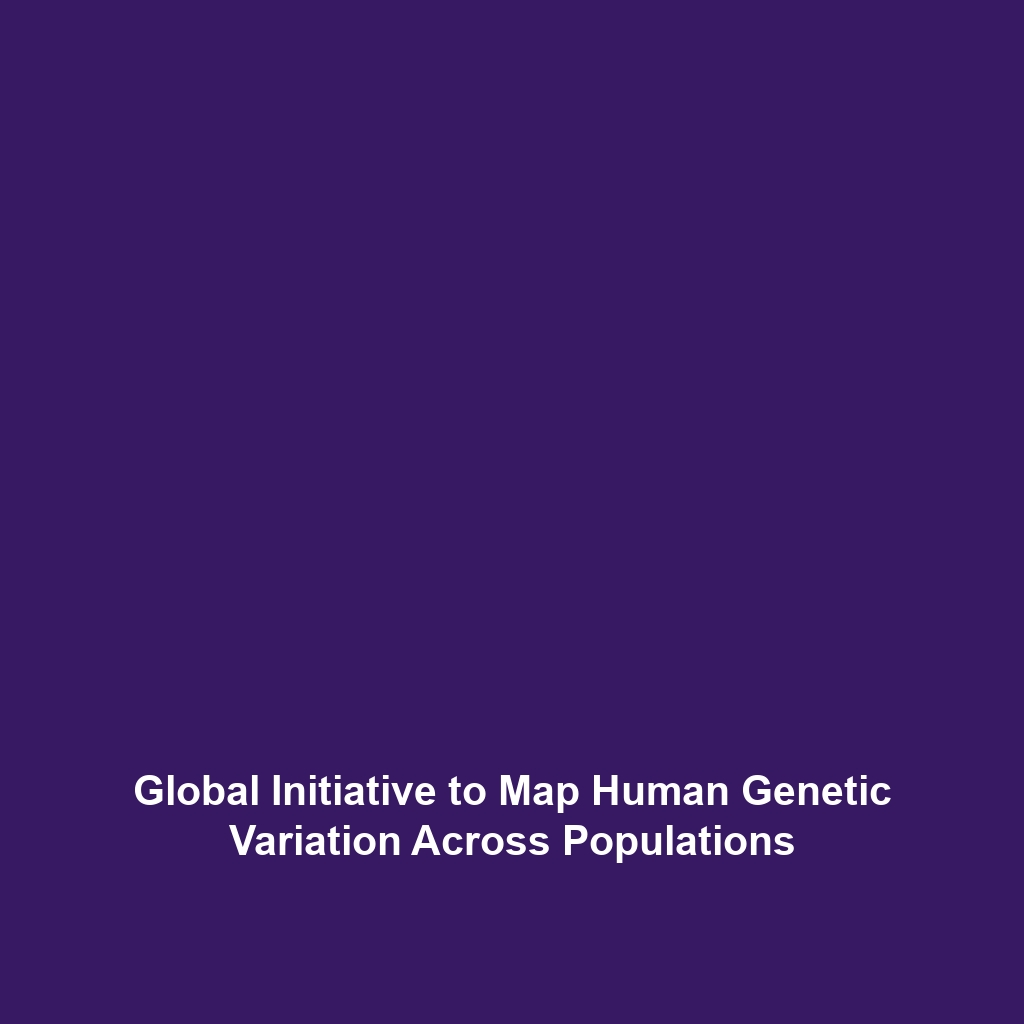An International Effort to Map Human Genetic Variation
Introduction
The quest to understand human genetic variation has led to significant international collaborations aimed at sequencing the genomes of people from diverse populations around the world. This effort reflects a broader goal initiated by the Human Genome Project (HGP), which aimed to map the entirety of the human genome. Investigating genetic diversity is crucial, as it enhances our understanding of human biology, disease susceptibility, and the genetic basis of health. By including a wide array of populations, this initiative seeks to present a comprehensive picture of human genetics, thereby informing future research and healthcare applications.
Key Concepts
Understanding the genetic variation among human populations is essential for many reasons. Some key concepts include:
1. Genetic Variation
Genetic variation refers to differences in DNA sequences among individuals, which can influence everything from physical appearance to disease risk.
2. Human Genome Project Integration
The current efforts to map genetic diversity build upon the foundational work of the Human Genome Project, which established the sequencing techniques and reference genomes critical for these studies.
3. Importance of Diverse Populations
Sampling diverse populations is crucial as it allows for more inclusive genetic insights, ensuring that findings are applicable across different ethnic and geographical backgrounds.
Applications and Real-World Uses
An international effort to map human genetic variation has yielded several practical uses, notably:
- Precision Medicine: By understanding the genetic profiles of different populations, healthcare providers can tailor treatments and interventions more effectively.
- Disease Prevention: Identifying genetic predispositions to certain diseases allows for more effective risk assessment and preventive strategies.
- Public Health Initiatives: Insights from genetic variation studies can help inform public health policies and practices, especially in diverse communities.
Current Challenges
Despite the progress made, several challenges persist in the study of genetic variation:
- Sampling Bias: Many ongoing studies often under-represent certain populations, which could skew results.
- Data Interpretation: The complexity of genetic data makes analyzing and interpreting the results a significant challenge.
- Ethical Concerns: Issues surrounding consent, privacy, and the use of genetic data remain paramount.
Future Research and Innovations
The future of mapping human genetic variation looks promising, with several innovations on the horizon:
- Next-Generation Sequencing (NGS): Advances in sequencing technologies are expected to pave the way for more comprehensive and rapid genome analysis.
- Big Data Analytics: Utilizing big data tools will enhance the capacity to analyze complex genetic information from diverse populations.
- Collaborative Initiatives: Increased collaboration among international research institutions is likely to drive more inclusive studies, benefiting global health.
Conclusion
In summary, the international effort to map human genetic variation through extensive genome sequencing is a vital continuation of the Human Genome Project. The insights gained from this effort hold immense potential for advancing precision medicine and public health. As research progresses, overcoming existing challenges and harnessing future innovations will be critical. For more information on the implications of genetic research, visit our related topics on Human Genome Project and genetic variation studies.

